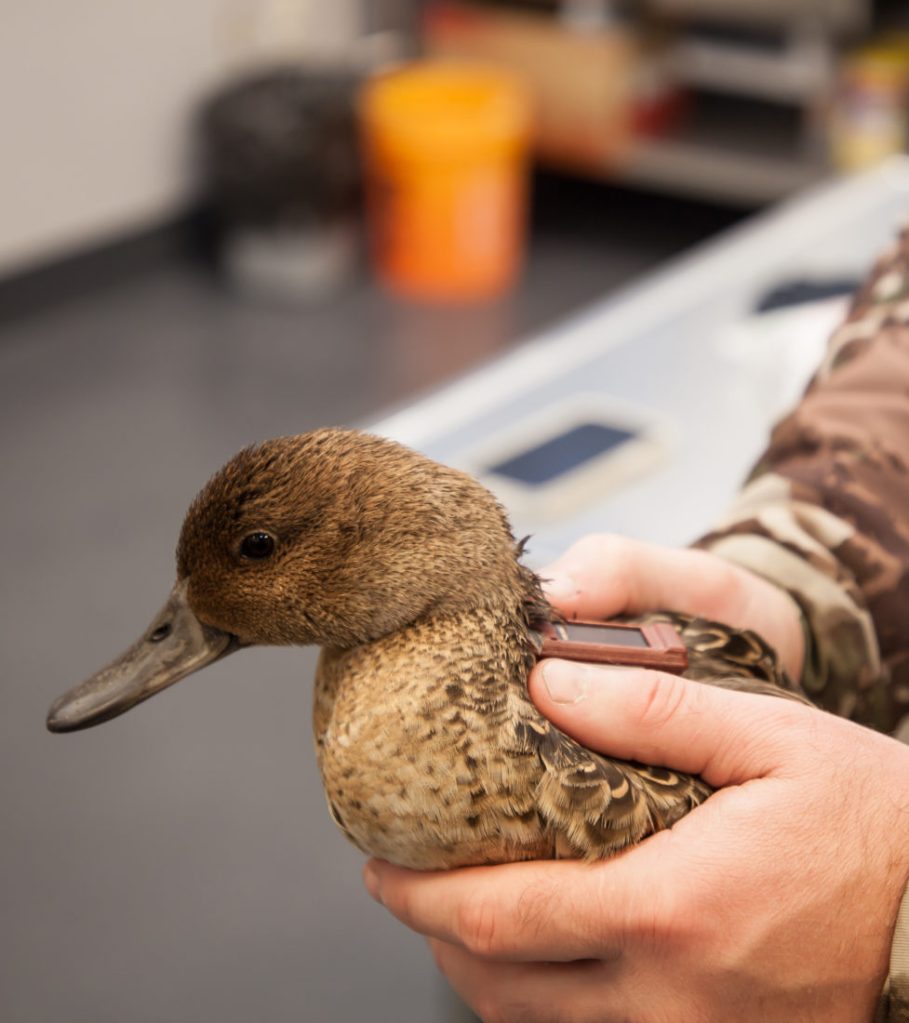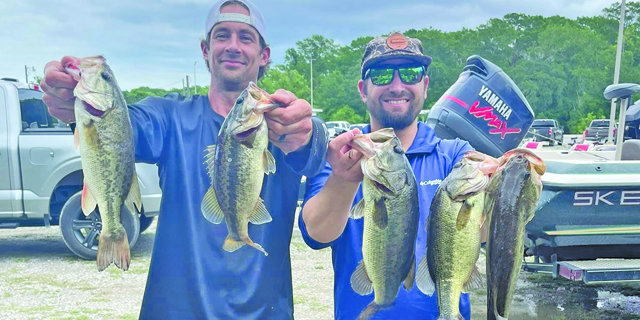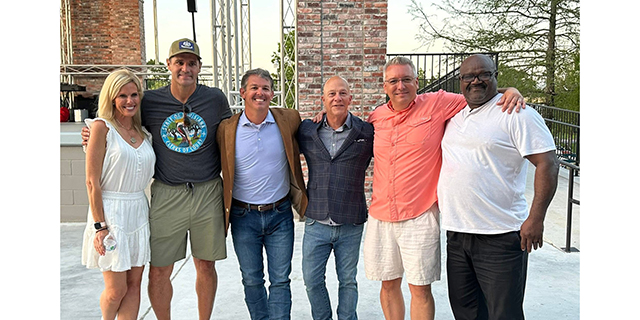Pintail from SW La. wings it all the way to Russia and back
Published 6:00 am Sunday, March 26, 2023

- A transmitter was attached to the back of one of the pintails LDWF biologists tagged during the winter of 2021-22 at Rockefeller Wildlife Refuge.
You’ve got to wing it, er, hand it, to a duck that should steal the spotlight from Buck 140, the deer recorded crossing the Mississippi River four times on round trips from Mississippi to Louisiana.
When a Louisiana waterfowl biologist highly regarded for his research saw the flight track marked by a lightweight, solar-powered transmitter last year, he did a doubletake. The female pintail left southwest Louisiana in March 2022, then stopped 10,000 miles later in Russia.
You read that right. The old U.S.S.R. It didn’t stop in the Dakotas or Canada.
At first, Link thought it was a dead duck.
“When you see a random long line like that, you assume the worst. You’re thinking, that bird is in a bag on a plane,” Paul Link said in a story of the pintail’s remarkable journey written by Lindsey Liles and published online by Garden & Gun on Oct. 18 (To Russia and Back: The Incredible Journey of a Pintail Duck).
Link downloaded the full data that revealed the bird’s incredible journey on two wings. It showed the duck exited Louisiana and soared to the eastern Dakotas, a Prairie Pothole Region that includes Canada.
Then the duck went offline for six months.
“She finally hit service again on a state penitentiary campus in northern California, of all places,” Link said in the story.
The duck had winged it across northwestern Canada, passed through Alaska, traversed the Bering Sea and landed during May in Russia. It became the first pintail anyone has ever seen flying to a new continent from the Deep South.
Why? The fact it flew an extra 4,000 miles past normal nesting and summering region is anyone’s guess.
“Waterfowl science is one the most advanced wildlife sciences there is. And still, after all these years, ducks are still mysterious, and they can still surprise,” the veteran Louisiana Department of Wildlife and Fisheries waterfowl biologist said in the story.
He’s glad to be a part of history, much like game biologists who tracked Buck 140 the past few years on its migration to Louisiana and back to southwest Mississippi. The GPS-collared buck was captured and tagged during a Mississippi State University Deer Lab study on deer movement in 2020. A Mississippi deer hunter harvested the famous buck in December 2022.
Link and his team affixed 30 transmitters to female pintails last winter on the Rockefeller Wildlife Refuge as part of an ongoing study. Some transmitters were of the lightweight, solar-powered variety attached to the duck by a small piercing on the back while others were more tradition devices similar to miniature backpacks.
Link said, “It’s crazy to think that this bird passed through my hands and went all the way to Russia, and to imagine all that she’s seen and survived – the storms, the blizzards, the ice; hunters, wolverines, foxes.”
The pioneering pintail apparently wasn’t the only one to touch down in the former Soviet Union, he said. On Oct. 21, 2022, another transmitter carrying duck reappeared online upon finishing a comparable journey.
That second female pintail also passed within a few hundred meters of the first duck’s flight, five weeks apart. Both ducks molted and relaxed 50-70 days without flight in the Russian Arctic, took off back to Alaska and made nonstop migrations of more than 2,000 miles, one to California and the other to Montana. Then they returned to the South.
Link said information compiled from their respective trips is critical to conserving pintails, whose population has decreased since the 1950s. There are an estimated 1.78 million pintails, close to the 1.75-million mark that would prompt making the species off-limits to duck hunters.
He wants to understand more clearly exactly where pintails travel and how they rely on the environment of each place visited. The new transmitters contain a triaxial accelerometer (akin to a bubble level) that records programmed bursts of behavioral data that allows biologists to determine what habitat the migratory bird is using and what it is doing there – flying, sleeping, preening, tipping or dipping.
All that information can be used for future conservation efforts, according to Link.
“See these journeys really strengthens our land ethic and our sense of conservation stewardship. These birds that have been to the Prairie Pothole Region, Alaska or Russia … they’re planning on coming home to Louisiana, and they’re counting on us to have the habitat waiting for them,” he said.
DON SHOOPMAN is outdoors editor of The Daily Iberian.





